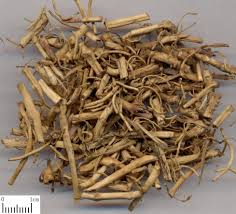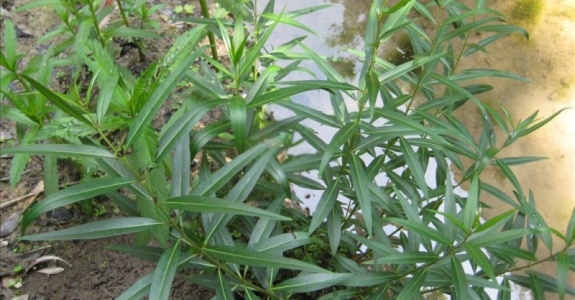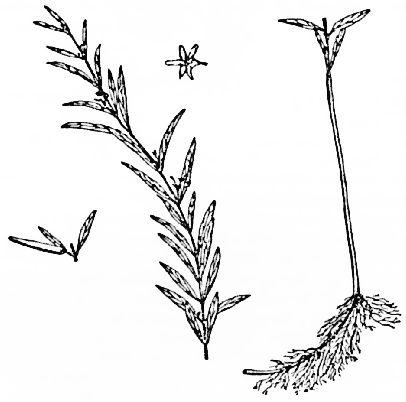- Coughing and wheezing accompanied by sputum that is difficult to expectorate,
respiratory difficulty, and gurgling sounds in the t hroat due to Phlegm Dampness
obstructing the Lungs. Use with
Aster tataricus-
Zi wan and
Pinellia ternata- Ban xia.
- Chronic productive cough, wtih
Morus alba-
Sang bai pi.
- Unproductive paroxysmal cough and bloody sputum associated with Lung consumption,
with
Stemona tuberosa- Bai bu.
- Cough associated with externally contracted Wind Cold Phlegm obstruction. Use
with
Platycodon grandiflorus- Jie
geng and
Schizonepeta tenuifolia-
Jing jie.
- Dampness induced edema with
Atractylodes
lancea- Cang zhu.
PATENT COMBINATIONS
- Chronic cough developed from
common cold: Relieves cough, eliminated Phlegm, promotes circulation
of Lung Qi, Releases Exterior pathogens Platycodon
& Stemonia- Zhi sou san.
PREPARATIONS: Decoction.
Dry tuber and root 9-15 g.
[1]
Tuber and root 4-9 g.
[2,3] Good quality
has a thick rhizome and long, small roots.

Perennial herb 60 cm in height. Rhizomes; slender, creeping,
fine roots clustered at rhizome node. Stem; erect, few branches, base slightly
woody. Leaves; opposite, lanceolate, apexes acute, bases gradually narrowing,
margins intact. Flowers, in summer, small axillary purple flowers appear to form
cymose inflorescences. Fruit; a follicle, slender and angled.
[1] Barefoot Doctor's Manual- 1977 Prepared by the Revolutionary Health Committee
of Hunan Province. Original Chinese manual- Victor W. Sidel. Originally published
by Dr Joseph Quin and the Fogarty International centre, Bethdesda (1974). Madrona
Publishers Seattle Washington ISBN 0-914842-52-8
[2] A Complete English Dictionary of Medicinal Terms in Chinese Acupuncture
and Herbalism 1981- Henry Lu Chinese Foundations of Natural Health- The Academy
of Oriental Heritage, Vancouver, Canada.
[3] Chinese Herbal Medicine Materia Medica- Dan Bensky and Andrew Gamble- Eastland
Press 1986 Seattle Washington ISBN 0-939616-15-7
Images
1.
ydvn.net
2.
[1]
3.
tcm100.com Bai qian causing the rebellious Qi of
coughing to descend is similar to but weaker than that of
Ma
huang. The former herb can be substituted for Ma huang to treat wheezing
and coughing in patients who are not strong enough to tolerate the latter herb.
[1]
References
[1] Chinese Herbal Medicine Materia Medica- Dan Bensky and Andrew Gamble- Eastland
Press 1986 Seattle Washington ISBN 0-939616-15-7
Triterpenoid saponins.[1]
References
[1] Chinese Herbal Medicine Materia Medica- Dan Bensky and Andrew Gamble- Eastland
Press 1986 Seattle Washington ISBN 0-939616-15-7

 Cynanchum
stauntonii. or C. glaucescens. 白
前 Bái qián
Cynanchum
stauntonii. or C. glaucescens. 白
前 Bái qián  HABITAT:
HABITAT: